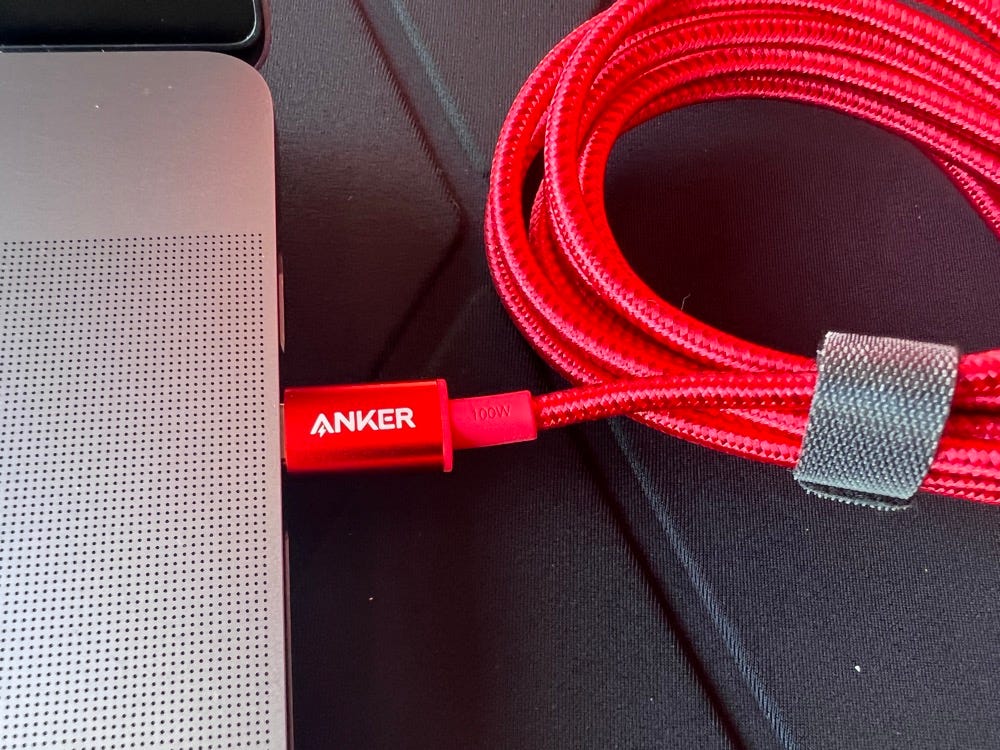
Not a week goes by that someone doesn’t ask me about USB-C charging cables, and whether it’s safer to buy a shorter charging cable for a smartphone or a laptop, because longer cables are more prone to overheating and could burst into flames.
When I prod the questioner about this, they’ll admit to having heard or read about “increased resistance” and how this can cause overheating. And because of this, they should choose the shortest cable possible.
Not true.
I’m currently using a 3-meter/10-foot USB-C to USB-C cable from Anker to charge my 16-inch M1 Pro MacBook Pro, and it’s charging the battery at 94W, which is the best I’d expect from USB-C charging (if I want more, I’d use the 140W MagSafe cable).
The cable is flawless.
It just works and doesn’t get hot or even warm.
From a fire safety perspective, I would avoid two things here:
- Long cables from no-name brands: My experience with these has been variable. They seem to suffer from premature death when pushed hard.
- Damaged cables: 100W USB-C chargers put out a fair bit of power, and while there are a lot of safety features built into USB-C chargers, a damaged cable could still pose a safety issue.
But I have another safety concern with long cables. A much more serious safety concern than fire.
They’re a trip hazard.
Having long cables trailing about the place is a real danger. Not only can tripping on a cable damage people, but it can also damage the hardware they are connected to. And I’ve seen plenty of people and laptops go flying, all because of long cables.
While long cables might seem handy, they can also be a major pain.
So, if you’re tempted to buy a long charging cable, consider whether you need one or if it’s something that sounds like a good idea but in actuality will turn out to be annoying.




















